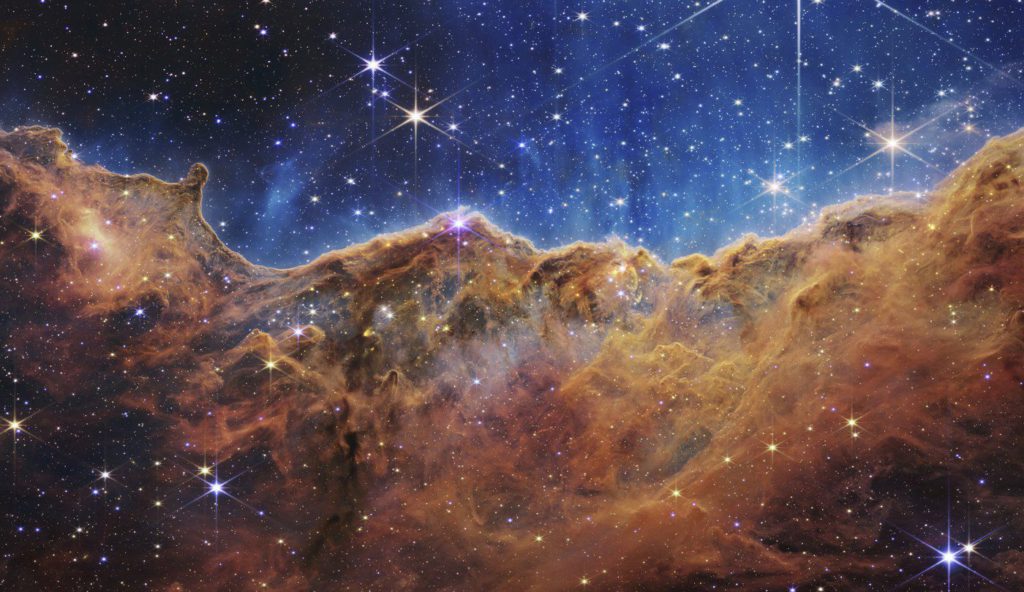
I sat on the swing set with my best friend Shirley, staring out at the blue, blue sky on a summer day many years ago. We wondered about the stars and the sun and how certain words in our vocabulary came to be. That was the nature of our young friendship – pondering the mysteries of the universe.
Not long after, on July 20, 1969, I was in Shirley’s living room watching the blurred black and white TV images of Neil Armstrong taking his first step on the moon. “One small step for man…” he began. It was wonderous.
We went outside and tried to find the moon in the day time sky, but couldn’t. Still, we somehow understood that we’d never look at it exactly the same way again, because now we knew human beings had been there. It was forever changed.
I thought about that the other day when I saw the first pictures coming in from the James Webb Telescope on the NASA website. Look how far we’ve come, I thought.
I don’t like saying the word “awesome” too much because it’s overused these days. But those pictures were definitely awesome.
The fact that the James Webb Telescope was even able to blast off is, in itself, a huge feat. Over the years it was being built, there were many cost and scheduling issues. Lots of little things went wrong along the way, and it almost got cancelled completely.
And just imagine the pressure there was to make sure the telescope was as perfect as they could get it before it launched. Because once it was way out there in space, there was no going back.
When it finally left the earth on December 25, 2021, more than $10 billion had been spent. And a lot of people were pretty nervous.
Would it get to where it was supposed to go? Would it unfold properly? Would it work at all?
As we saw the other day, it exceeded expectations.

This image provided by NASA on Tuesday, July 12, 2022, shows Stephan’s Quintet, a visual grouping of five galaxies captured by the Webb Telescope’s Near-Infrared Camera (NIRCam) and Mid-Infrared Instrument (MIRI). This mosaic was constructed from almost 1,000 separate image files, according to NASA. (NASA, ESA, CSA, and STScI via AP)
All of the pictures were spectacular and mesmerizing, but the one that struck me most was Stephan’s Quintet, seen above. First of all, I didn’t realize it, but Stephan’s Quintet is something I’ve seen many times before.
A couple of minutes into the 1946 film “It’s A Wonderful Life”, there is a scene where the angels are praying for George Bailey. The angels are represented by an animation of Stephan’s Quintet, having a conversation.
I never knew that.
The Carina Nebula photo is also stunning, with sparkling, golden cloud dusts beneath millions of twinkling stars.
The most amazing, mind-boggling thing to me is the fact that in those photos, we are looking far into the past. In some cases, we are looking back many millions of light years.
Light years. I’m still trying to wrap my head around that concept.
The telescope’s main mission will last 5 to 10 years, but its expected lifespan will be up to 20 years, similar to the Hubble telescope. Just imagine what scientists, and the rest of us, will learn from it by then.
Maybe we’ll discover all kinds of new things, including ways to help ourselves, and, especially, our tiny blue planet.
As Joni Mitchell sang, “We are stardust, we are golden, and we’ve got to find our way back to the garden.”


 Irene Jackson
Irene Jackson

